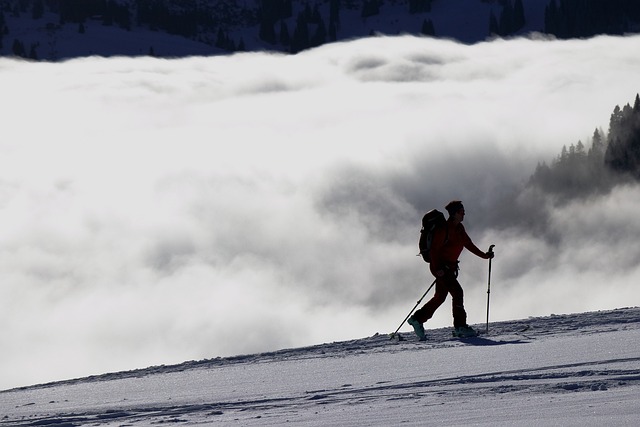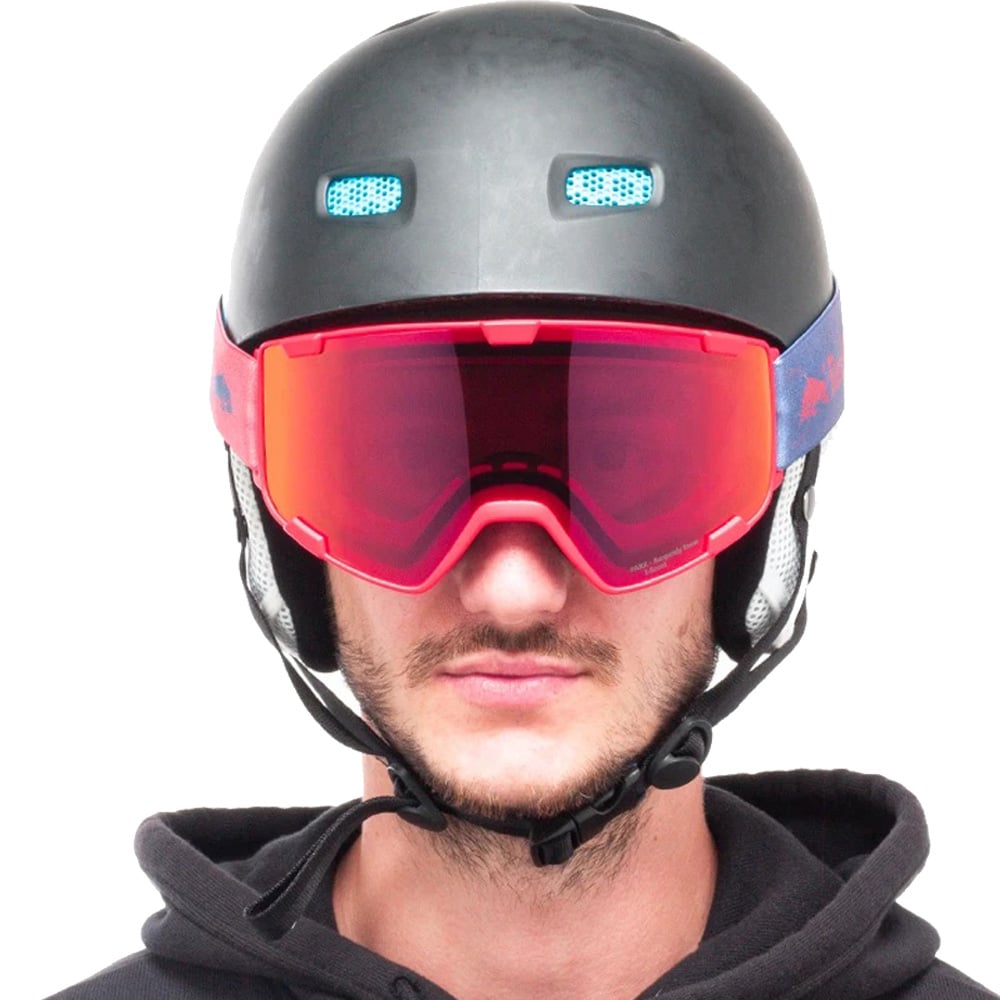
The best ski jackets to use on backcountry trips are those that have a high degree of breathability, flexibility, comfort, and weather resistance. They also pack easily and can be worn anywhere. Patagonia has a wide range of gear, including softshells, hardshells and parkas for backcountry travel. We believe it is one of the top brands in this category.
The Best Softshell for Backcountry Use
Patagonia has been manufacturing high-performance softshells ever since the 1970s. They still produce some of best softshells available. Their Pluma Jacket is a top choice for backcountry-oriented skiers who prioritize breathability, stretch, comfort, and weight. It is made from waterproof polyester with taped seams. It is helmet-compatible.
While it can be bulky with a helmet, its helmet-compatible hood is adjustable and has a laminated visor for visibility in bad conditions. It has a handy cinch cable at the bottom, which seals out cold air, snow, wind and is easy to use.

Almost every Patagonia hardshell has enough features to make it suitable for backcountry use. Some of the non-waterproof designs they offer are great for mild days like Stormstride and Triolet.
Winter Activities: Best Hardshell
If you're a beginner, a good option is the Patagonia Nano Air. This jacket provides all you need for warmth and dryness. You can adjust the height of the chin guard to find the right fit for you.
The Best Men's Ski Jacket
This is the perfect insulated jacket for skiers who want a little more protection than a fleece midlayer can provide, but not as much as a puffy. This jacket is padded with 80 grams of recycled synthetic Thermogreen insulation in the torso and half that in the sleeves, which gives it enough warmth to protect from most cold weather conditions. The H2No fabric, which is made of two layers and has a breathable and water-resistant function, feels soft on the skin.
It's patent-pending because of the sonic welded seam construction, micro stitching and bulk reduction. The hood can be worn with helmets and features a laminated vision visor. It's also adjustable using the Touch Point System. This system uses three embedded cord locks on the hood and two at the front hem to make it easier to adjust to seal out snow and rain.

This jacket is ideal for beginners. It's padded with 80 grams of recycled synthetic Thermogreen and has a soft-against-the-skin taffeta liner that wicks moisture away from your body. The two-layer H2No fabric offers a waterproof barrier and keeps out water. Meanwhile, the taffeta wicks sweat away from your body, and pit zips remove heat when things get too hot. This jacket can also be connected to compatible Patagonia winter pants through a loop at the rear. Additionally, the chinguard is height-adjustable so that you can find the perfect fit.
FAQ
What size luggage should I carry?
The length of your trip determines how much luggage you should take. If you are flying, your hand luggage is limited to less than 20kg. You will need more space if you travel by train or bus.
A form will be provided to you when you arrive at the airport with information about your flight. This form will ask for information such as your baggage weight and if you require assistance to check them in.
This must be done before you leave your home. You might find yourself stuck waiting in line for hours as everyone else inspects their luggage.
It's best to travel light, as you never know when something might happen. If your bag is lost or damaged, you will not have any clothes.
How do you travel light?
There is no right answer when packing for your trip. Here are some tips that will help you make the right choice when packing for your next trip.
-
Only bring what you truly need.
-
Only bring what you are going to wear.
-
Do not buy too many.
-
Take enough room in your suitcase
-
Always double-check to make sure that everything is in your bag.
-
Take advantage of free storage facilities.
-
Use reusable water bottles instead of buying bottled water.
-
You can carry a backpack rather than a suitcase.
-
Walking or cycling is a better option than using public transport.
-
Pick the right size bag
-
Do not carry heavy items.
-
Prepare for anything.
-
Leave nothing behind.
How long does a flight take between two countries.
The time taken to fly varies depending on the distance between the airports and the weather conditions.
The average flight time is approximately 3 hours.
The actual flying time depends on many factors like the airline, aircraft type and airport delays.
What is the first thing you should do upon arriving at your travel destination
It is a good idea to have a plan for when you get to a destination. This will help you plan what to do and where to go next.
It is important to plan ahead so you don't forget anything.
For instance, if your trip to a city lasts more than one hour, research which landmarks, museums, and parks you'd like.
It might be worth looking into getting a map for the area or reading about the history of this region.
Statistics
- Alcoholic beverages with 24% alcohol or less are not subject to limitations in checked bags. (tsa.gov)
- They're also likely to offer babysitting services, in case you'd like to have dinner one night after 7 p.m. (travelandleisure.com)
- You can use compression sacs or cubes to reduce the volume of your clothes by up to 80%—this is especially convenient for bulky items such as sweaters and jackets. (eaglecreek.com)
- Pack sweaters, jackets, and underwear in reusable compression bags creating up to 75% more space in your luggage. (wikihow.com)
- Alcoholic beverages with more than 24% but not more than 70% alcohol are limited in checked bags to 5 liters (1.3 gallons) per passenger and must be in unopened retail packaging. (tsa.gov)
External Links
How To
How to Enjoy Weekend Vacations
A weekend away is an opportunity for reflection, relaxation, and enjoyment. It's a time to unwind, recharge, and disconnect.
This is also a time for reflection on your priorities and how you spend your weekends. You might find yourself reflecting on the benefits of working in a position that allows you to travel if you are lucky enough.
However, no matter your reason for taking time off from work, you should plan plenty of activities.
You will probably want to spend time alone, but still enjoy the company and friendships back home. It is also important to be active.
There are many things to do on the road, whether you want to visit local attractions, hike or camp, or just relax and enjoy the sun.
And make sure you give yourself ample time to rest and recover after each activity. After all, it's easy to burn out when you're constantly pushing yourself. Plan ahead, and make sure you allow for downtime.
You'll be able to relax again once you have landed safely. But it won't be long before you're itching to hit the ground running once more.
Don't fall behind. Make sure you set aside time daily to catch up on emails and projects.
You will feel more connected, and less overwhelmed. Plus, you won't miss out on any opportunities to grow your business.
Last but not least, don't be afraid of asking for help. Sometimes, you might feel stuck and unsure what to next.
For advice, reach out to someone in your workplace or a close friend. You always have time to chat with your loved ones, regardless of how busy you are.